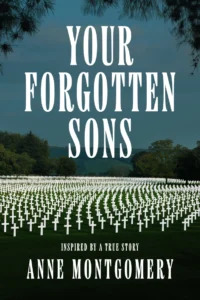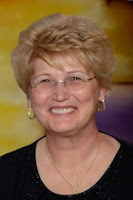C.D. Hersh's Blog, page 4
September 1, 2025
Tell Again Tuesday Cornbread
CornbreadBy Jeannie Watt

Hello everyone! Today we’re talking cornbread. Is there anything better with chili, stew or soup? I’ll come right out and say that I’m picky about the texture of my cornbread. I like it moist on the inside and crispy on the edges. Too many times I’ve bitten into a golden square of deliciousness, only to blow crumbs because it was as dry as a desert inside. After trying recipes that gave me overly dry or overly spongey cornbread, I came up with my own. I like it. I hope you do, too. . . .
For the rest of the blog go to:August 28, 2025
Friday Feature Looking For A Job
When I had one all along.

Anyone who has ever been unhappily unemployed – even for a short time – can testify to the damaging array of emotions that come with that particular package. So much of who we are is wrapped up in what we do.
After I aged out of TV reporting, I often found myself leery of running into acquaintances: the thought of addressing my lack of a fulltime job enough to make me queasy.
When the Great Recession hit in 2008, a financial meltdown that saw the nation’s unemployment rate rocket to 10%, there were so many unemployed people that support groups were formed. The unemployed could meet and chat and prop one another up amidst their hunt for a paycheck. Being on an extended job search became so common that, I’d like to think, the stigma of unemployment vanished to a certain extent.
When I was without work, there was no one with whom to share my pain. Still married at the time, my now ex was frustrated that I no longer brought home a big paycheck. I spent my days alone while the world went on without me. I was left wallowing in my own self-pity, which, as anyone who has ever lingered in that neighborhood can tell you, can become an awfully lonely outpost.
One afternoon, I returned home from yet another “thanks, but no thanks” interview, this time with a sports bar manager who had not too subtly appraised my buxomness quotient, multiplied it by my age, and deemed me unworthy, despite my skills with a shaker, my ability to pour a perfect shot every time, and in-depth knowledge of sports that would have kept even sober patrons entertained.
Shortly after that, I found a phone message from a temp agency. They’d gotten me a gig working on the assembly line at a Revlon plant in South Phoenix. I was to report early the next morning.
Now, I had always thought I was a tough girl. But I must be honest here. As I pictured myself Lucy-like – product slipping by on a conveyer belt too fast to handle – I cried. And, unlike that famous red head, I wouldn’t be able to eat my way out of the problem.
Full-time employment would evade me for several years, a time during which the only thing that sustained me was a skill that I had always considered just a means to an end. The fact that officiating amateur sports – an avocation I practiced in order to get my foot in the door in the sports-reporting business – would put food on my table was something I had never considered. And yet, it was the one place that felt normal, that I still had some semblance of control. The one place I felt like me.

The only place I felt comfortable those years I was without a fulltime job was on the field, especially with my longtime baseball umpiring partner Don Clarkson.
There was a rhythm to my world on the field that, no matter what was happening outside those lines, remained constant. Perhaps it was the need for punctuality, the ritual of donning the uniform, or the customary procedures in regard to game management. Maybe it was the camaraderie: players, coaches, fans, and fellow officials all involved in an endeavor that mattered to them. Or maybe it was that feeling after the game – whether the contest went smoothly or not – that I had done my best and learned from my mistakes.
Funny, it sounds like a job.


I wish I’d thought so at the time.
Here is a peek at Anne’s latest release.
 Bud Richardville is inducted into the Army as the United States prepares for the invasion of Europe in 1943. A chance comment has Bud assigned to the Graves Registration Service where his unit is tasked with locating, identifying, and burying the dead. Bud ships out, leaving behind his new wife, Lorraine, a mysterious woman who has stolen his heart but whose secretive nature and shadowy past leave many unanswered questions. When Bud and his men hit the beach at Normandy, they are immediately thrust into the horrors of what working in a graves unit entails. Bud is beaten down by the gruesome demands of his job and losses in his personal life, but then he meets Eva, an optimistic soul who despite the war can see a positive future. Will Eva’s love be enough to save him?
Bud Richardville is inducted into the Army as the United States prepares for the invasion of Europe in 1943. A chance comment has Bud assigned to the Graves Registration Service where his unit is tasked with locating, identifying, and burying the dead. Bud ships out, leaving behind his new wife, Lorraine, a mysterious woman who has stolen his heart but whose secretive nature and shadowy past leave many unanswered questions. When Bud and his men hit the beach at Normandy, they are immediately thrust into the horrors of what working in a graves unit entails. Bud is beaten down by the gruesome demands of his job and losses in his personal life, but then he meets Eva, an optimistic soul who despite the war can see a positive future. Will Eva’s love be enough to save him?
Praise for Your Forgotten Sons
“Although a deftly crafted work of original fiction, “Your Forgotten Sons” by Anne Montgomery is inspired by a true story. An original and inherently interesting read from start to finish, “Your Forgotten Sons” will prove to be an immediate and enduringly appreciated pick.” Midwest Book Review
“This was a quick, riveting read that really challenged me to think differently about our servicemen and women, especially those who take on the jobs that don’t get heroically depicted in the media or news…I really highly recommend this book to anyone that is looking for a different take on American history. I left it with a newfound appreciation for the unsung heroes.” Bekah C NetGalley
“This is the truth. It’s gritty and painful and bittersweet – and true. When you think you’ve read every perspective of WWII, along comes Bud to break your heart.” Bridgett Siter Former Military Reporter
“Anne Montgomery writes a strong story and I was hooked from the first page. It had a great concept and I enjoyed that this was inspired by a true story…It was written perfectly and I was invested in the story. Anne Montgomery has a great writing style and left me wanting to read more.” – Kathryn McLeer NetGalley
Available at Amazon, Apple Books, Barnes & Noble, Google Books, and Kobo Anne Montgomery has worked as a television sportscaster, newspaper and magazine writer, teacher, amateur baseball umpire, and high school football referee. She worked at WRBL‐TV in Columbus, Georgia, WROC‐TV in Rochester, New York, KTSP‐TV in Phoenix, Arizona, ESPN in Bristol, Connecticut, where she anchored the Emmy and ACE award‐winning SportsCenter, and ASPN-TV as the studio host for the NBA’s Phoenix Suns.
Anne Montgomery has worked as a television sportscaster, newspaper and magazine writer, teacher, amateur baseball umpire, and high school football referee. She worked at WRBL‐TV in Columbus, Georgia, WROC‐TV in Rochester, New York, KTSP‐TV in Phoenix, Arizona, ESPN in Bristol, Connecticut, where she anchored the Emmy and ACE award‐winning SportsCenter, and ASPN-TV as the studio host for the NBA’s Phoenix Suns.
Montgomery has been a freelance and staff writer for six publications, writing sports, features, movie reviews, and archeological pieces.
When she can, Anne indulges in her passions: rock collecting, scuba diving, football refereeing, and playing her guitar.
Learn more about Anne Montgomery on her website and Wikipedia. Stay connected on Facebook, Linkedin, and Twitter.
August 26, 2025
Wednesday Special Spotlight Planning on a Road Trip
During a 2-day, 18 hour drive trip to the Boston, Massachusetts area, several years ago, we spent time plotting the third book of the Turning Stone Chronicles series, and wrapping up plot holes in book two. We always plot books when we travel. In fact, the Turning Stone Chronicles series was conceived on the road after we saw an exit road sign for a place called Turning Stone, New York.

Plotting on the road makes the time go faster for Donald, who drives, and keeps me from seeing all the crazy drivers tailgating us and zipping between semi-trucks and our safety zone. Nothing drives me nuttier than watching an F-150 Ford with a full jump cab try to squeeze into a space that barely fits a smart car, without giving us a signal! Fortunately, we were nowhere near the Jersey Turnpike where everyone drives like maniacs, although I think quite a few drivers must have had lessons from a Jersey driving school.
So what’s the point, you ask?
Here’s a few things we’ve learned during our loooong drives:
• Aging knees don’t like being cooped up in a car. Imagine that.
• It’s really hard to read plot notes written months ago while driving on a bumpy interstate.
• It’s even harder to write on a bumpy interstate road.
• I should really transcribe my notes as soon as we get home.
• Especially when words written while driving on the buzz strips on the shoulder of the road make my notes look like an EKG reading.
• We need a better system of capturing our discussions—and a tape recorder isn’t the solution. We tried that and there is so much road noise we couldn’t hear what we said.
• I like plotting almost better than writing—or maybe it’s the traveling I like.
• My husband plots very well—most of the time. I did have to throw a few suggestions out the car window.
• We need more road trips to get our series finished. If I can just stay healthy!
• Writing with a collaborator is fun!
How and where do you plot your books? Let us know in your comments.
August 25, 2025
Tell Again Tuesday Breakup
10 Things Not To Say To A Romance Author Writing a BreakupBy Lucy Mitchell

I am currently crafting the emotional wrecking ball part of my draft romance novel – the breakup 
It’s a tense and my emotions are all over the place.
This is not the time for witty comments from loved ones who have never written or read a romance novel in their life.
Here are some things not to say to . . .
For the rest of the blog go to:August 21, 2025
Friday Feature Writing the next book in a series
At some point, in the beginning of every writing journey, we authors wonder if we can really write a book. We ask ourselves: Can I do this? And if I can, will I be able to write a second book? Will my next book be as good as the first book? Will an editor love book number two as much as the first one? And, heaven forbid, what will I do if no wants the next book I write— assuming I can even finish it?
When we started our publishing journey back in 2012, with the pitch of the first book in our paranormal/urban fantasy seriesThe Turning Stone Chronicles to a publisher, we had some of those questions. Book One, The Promised One was taking a maiden journey into the editorial world of queries. And after the rejection stories we heard from other aspiring authors, we truly thought we’d have our first rejection slip. We had ideas about where the remaining books in the proposed series were going, but not much more than nutshells of ideas and a few paragraphs written in a black-and-white school composition book. Book number one didn’t even have a contract, and here we were bold enough to assume we could write and sell a six-book series.
Twelve years later (2024), with the release of book number four in the series, The Mercenary and the Shifters, we were now more than halfway through our series. Ah, but life had some interesting twists planned for us as we started on book number five. More later.
The journey has an interesting one. We’ve had a few surprises along  the way. We never expected our series to sell on the first toss over the publishing world transom. And we certainly didn’t expect the editor would want all six books without ever seeing them. We also didn’t expect the overwhelming learning curve of marketing that came crashing down on us. But somehow, we figured it all out—including the total replotting of book 4 when a minor character in book 3, Son of the Moonless Night, suddenly decided she wanted center stage and took over the plotting process. We also learned, thanks to a lovely review we received, that we can write without the dreaded sophomoric slump in our later books.
the way. We never expected our series to sell on the first toss over the publishing world transom. And we certainly didn’t expect the editor would want all six books without ever seeing them. We also didn’t expect the overwhelming learning curve of marketing that came crashing down on us. But somehow, we figured it all out—including the total replotting of book 4 when a minor character in book 3, Son of the Moonless Night, suddenly decided she wanted center stage and took over the plotting process. We also learned, thanks to a lovely review we received, that we can write without the dreaded sophomoric slump in our later books.
If you’re just beginning your publishing journey and you’ve answered “no” and “I don’t know to the questions in the opening paragraph, you are starting your journey off stifling your creativity. If you can finish a single book that has all the elements an editor wants, then never fear. You can write another book as good as the first and maybe even better.
Now for the “more later” promised above. With the release of book four in July 2016 we started on plotting for book five. However, we got asked by our publisher to join a group of twelve other authors and to write a book in a series. That happened in February of 2017 plus then a lot of promotion for the rest of the year as we tried to get back to plotting book five. The next three years proved to be a health challenges plus being asked to write and direct three Easter dramas at our church. Then Covid slowed us down and several broken bones all contributed to slowing down writing. Book five is plotted but still being written.
Then the publisher closed and now we’re in the throes of learning about self-publishing with all that entails. However, let turn back to writing the next book in a series.
Here are some tips to help you make your goal of book number 2, 3, and more.
Keep a positive attitude. A lot of people want to write a book. Many say they’re going to write a book SOME DAY. You have written a book. You’ve slapped those all-important two words on the last page—THE END. Additionally, if you got a contract from an editor, you have validation that your book was good. So don’t let doubt get in your way.Don’t wait until your creativity well runs dry to begin the next book. Writing stirs up our muses, and there’s no better time to start thinking about the next book than while you are working on your current book.When you have an idea for the next book, let the need to write it spur you on. Having a second story waiting in the wings compels us to finish the WIP.When you get that nutshell of an idea for book number two, write it down! Don’t say, “I can remember that.” Chances are you won’t. Instead, drop it in a computer file or paper file, whichever works for you. Read it often. Think about it before you go to bed, but not if it makes you an insomniac. Let it bubble and stew in the back of your mind until a full-blown story is born.Capture ANY wild story ideas that come your way. No tidbit you find remotely interesting should be ignored. You never know when inspiration for the next book will hit. The plot could be residing in a snippet of conversation you overhear at your favorite restaurant, a story you read in the newspaper, or even an interesting road sign. The Turning Stone Chronicle series originated from a road sign for a place named Turning Stone that we passed on a long road trip. We said, “What an interesting town name. Could we write a story with that title?” And the rest is history.Learn from your mistakes. Continued practice of the craft makes you a more skilled writer. Keeping a weasel word list, noting the places where your editor or beta readers say you are weak, and continuous education in the craft will improve your writing skill and storytelling ability. The more we write, the more second nature the job becomes. So, when the next book comes along, you’ll have an easier time putting it down. And who doesn’t want that?Planning on writing a series be sure to keep a world book. Nothing slows the writing process faster than trying to remember someone’s eye color from book one or any other character’s feature or a place name.August 19, 2025
Wednesday Special Spotlight Pigskins and Plot Twists
My writing partner (The D in C.D. Hersh who is my husband) and I were talking about the start of the football (American) over dinner one night. He commented that the game of football was a lot like writing a book.
“How so?” I asked.
“Football is a series of scripted plays set within the rules of the game,” he said. “With the object being to win. Writers have a scripted set of plays to work within too—the basic structure of a plot—with the goal being a satisfying ending. Certain plays are designed to fool the defense. The team that does this the best, with twists in the plays the opposition doesn’t expect, ends up with the big score and wins the game. The writers who come up with the best plot twists, the ones that make you go ‘whoa, I didn’t see that coming’ are the writers who often succeed in the business. The ones who score big and win the game.”
I admit I hadn’t thought much about comparing football to writing, but after thinking about what he said, I saw the connection. For example, last night we watched the romantic comedy When in Rome that had plot twists that made us both say, “Didn’t see that coming.” And believe me, as writers we are always dissecting the movies we watch. See if you can figure out the plot twists in this fun movie.

While in Rome, Italy, at her sister’s wedding, Beth, who doesn’t believe in love, meets the best man Nick and discovers she’s attracted to him. During the reception the priest comes by and asks Nick if he’ll come play poker with him again, explaining to a shocked Beth that he’s new to the priesthood and is still working on getting a handle on some temptations. Nick declines, saying the padre cleaned him out already and whisks Beth off to dance.
Later, giving into her attraction, Beth follows Nick outside with a bottle of champagne and sees him kiss another woman. Disillusioned, and drunk, Beth picks up four coins and a poker chip from a lover’s wishing fountain in the town square. Legend says those who throw their coins in the fountain
will have their wishes come true. Love has never worked for Beth, and she decides to save the wishers from ill fated love by removing their coins.
When she returns home to the States, the men who threw the coins in the fountain begin appearing, professing their love. One of the guys is Nick, the best man at her sister’s wedding. As her relationship with Nick grows, Beth discovers the lovesick men stalking her have fallen under a spell cast by the fountain when she removed their coins. To remove the spell she must return the coins to each of the men.
While at Nick’s apartment one night she sees a poker chip on the table that is identical to the one she removed from the fountain. She breaks up with him, believing he is under the spell too. Beth returns the coins to the men and, as she does, they snap out of the spell, everyone that is but Nick, who professes his forever love for her.
At this point, any romance reader knows that Nick isn’t under the spell. It’s too contrary to the rules of romance. True love always wins out. But the writer hasn’t shown us who the poker chip belongs too. All along we are lead to believe the chip belongs to Nick. We’ve seen a poker game at his home using the same chips. He’s acted with the same lovesick impulses the other four men displayed. There’s a plot twist in the wings, but we haven’t quite figured it out yet.
A year later Beth and Nick are back in Rome, preparing for their wedding when one of the lovesick men, a magician who played sleight of hand with Nick’s poker chip, comes to her and says he gave her the wrong chip back. Beth now believes Nick is still under the fountain’s spell.
As the wedding scene plays out, it’s obvious the priest is having trouble with the wedding sermon. He draws out the invitation to object to the marriage. He gives the bride inappropriate compliments. He changes the vows to “will you have this woman as your awful wedded wife?” He’s clearly under duress performing this wedding. When he asks Beth, “Will you have this man as your awful wedded husband?”
She presses the poker chip into Nick’s hand and runs out of the church. Nick follows and she confesses to him that he’s under the spell of the fountain because she removed his poker chip from the water. He doesn’t really love her.
“This isn’t my chip,” Nick say and throws it back in the fountain.
In the background, behind Beth and Nick kissing in front of the fountain, you see the priest whirling around on the square shouting, “I’m free from temptation!”
The second twist? The owner of the chip didn’t wish for love, but to be free of it.
Just like a football team’s defensive back is fooled by a play action pass, we have to admit—we didn’t see that one coming.
As you can see miss-direction can be quite startling when not expected. Do you have some memorable plot twists in stories that you consider winners? We’d love to hear them.
August 18, 2025
Tell Again Tuesday Social Group Writing
Writing Across CulturesBy Dave King

Not long ago, I had a client tell me that she thought her manuscript (which was very strong) was being rejected because her main character came from South America, while she lived in upstate New York. Thing is, she had based her character on a relative who did live in rural South America. I suggested that she either dedicate the story to her relative or perhaps include an author’s note explaining the connection.
I was a bit disappointed that she had to establish her bona fides for writing a character who didn’t belong to her . . .
For the rest of the blog go to:August 14, 2025
Friday Feature Cooking
Pasta Primavera is a perfect warm weather dinner, especially with a glass of cool, crisp white wine.
The word primavera means springlike in Italian, but don’t be fooled that this dish originated in Italy. Nope! Both Canada and the US claim the honor of creating Pasta Primavera. No one knows for sure which country invented this delicious dish, but the fact is that it didn’t come to be until the 1970s.
This recipe is for 2. If you are serving more simply increase the ingredients accordingly. Don’t prepare extra for another meal because the veggies get mushy when reheated.
Pasta Primavera
 9 – 10 oz. cheese tortellini
9 – 10 oz. cheese tortellini
2 tbsp. olive oil
5 baby carrots
⅓ red onion
½ red or yellow pepper
4 asparagus
⅓ seedless cucumber or small zucchini
3 tbsp. butter
8 or 10 sliced mushrooms
1½ tsp. garlic powder
Freshly ground black pepper to taste
1 tbsp. lemon juice
½ cup grated Parmesan cheese plus more for serving
2 tbsp. parsley, optional
Cook pasta per package directions al dente, no longer. Drain into a strainer, retaining ⅔ cup of water for the sauce. Cover tortellini to keep warm.
Slice carrots in thirds lengthwise. You do this because carrots take so much longer to cook. Slice red onion into thin rings, but not too thin, then cut in half.
Remove seeds from pepper then cut into strips lengthwise. Set aside. Freeze the extra for another recipe.
Cut asparagus into 1-inch pieces. Add to pepper bowl. Slice cucumber/zucchini about ¼ inch thick then add to pepper mix.
Pour oil into a Dutch oven set on medium-high heat. You need this size pan to properly blend the veggies. Stir in carrots and onion, sauté until crisp tender, 6 – 8 minutes. Stir often and adjust heat to prevent burning.
Lower heat to medium. Add butter, asparagus, pepper slices, and mushrooms. Season with garlic, black pepper, and lemon juice.
Gently blend in pasta and cheese. Add small amounts of reserved water to thin sauce to your liking.
Heat through. Sprinkle on parsley then serve.
May you enjoy all the days of your life filled with good friends, laughter, and seated around a well-laden table!
Sloane
 Sloane Taylor is an Award-Winning romance author with a passion that consumes her day and night. She is an avid cook and posts new recipes on her blog every Wednesday. The recipes are user friendly, meaning easy.
Sloane Taylor is an Award-Winning romance author with a passion that consumes her day and night. She is an avid cook and posts new recipes on her blog every Wednesday. The recipes are user friendly, meaning easy.
To learn more about Taylor go to her website. Stay in touch on Blogger, Twitter, and LinkedIn.
Taylor’s cookbooks, Hot Men Wear Aprons, Date Night Dinners, Date Night Dinners Italian Style, Sizzling Summer, and Recipes to Create Holidays Extraordinaire are released by Toque & Dagger Publishing and available on Amazon.
August 12, 2025
Wednesday Special Spotlight You might be addicted to books if…
 We don’t know about you, but the thought of surrounding ourselves with two thousand books makes us very happy. We love to read, we love books, and we love to surround ourselves with books of all kinds. If you could see into our offices, we definitely have two thousand books and that not including the library of paper backs in the basement that we’ve mentioned before. This obsessiveness is probably from even if we haven’t read a book, we can rarely bear to part with it. This was especially hard when we closed up Donald’s parents’ things and their various books. Dad’s were texts on music and electronics with mom’s being about music and cooking. The cookbooks were kept but the other’s that were texts got passed on to Goodwill.
We don’t know about you, but the thought of surrounding ourselves with two thousand books makes us very happy. We love to read, we love books, and we love to surround ourselves with books of all kinds. If you could see into our offices, we definitely have two thousand books and that not including the library of paper backs in the basement that we’ve mentioned before. This obsessiveness is probably from even if we haven’t read a book, we can rarely bear to part with it. This was especially hard when we closed up Donald’s parents’ things and their various books. Dad’s were texts on music and electronics with mom’s being about music and cooking. The cookbooks were kept but the other’s that were texts got passed on to Goodwill.
What about you? Does your passion for books border on the obsessive?
You might be addicted to books if…
• You never sign off your Kindle/Nook without downloading a book.• You never leave a bookstore without buying a book.• You read multiple books at any given time.• There’s a book—or more—in every bathroom, by every easy chair, and on your nightstand or you carry your Kindle/Nook from place to place.• Perhaps you have a reading app on your phone to fill in time while you wait in line for that special cup of coffee.• There’s no such thing as taking out only ONE book at a time from the library.• The librarian knows you by name.• Your paperbacks are stacked two deep on your shelves.• You had to buy a Kindle AND a Nook because you’ve run out of shelf and floor space in your office.• Your friends think you are their personal lending library.• You get so lost in a book that you don’t hear your name being called.• Engrossed in the book you don’t hear the oven timer and burn a meal.• You read while walking down the street.• You’ve actually created furniture using your books.• You have every book your favorite authors have ever written and eagerly await their next release.We have done all these things at one time or another and must admit …. we’re addicted to books. How about you?
Now kick back, relax and pick up a good book to read.
August 11, 2025
Tell Again Tuesday Stop Waiting
10 Wake-Up Calls We Usually Receive Too Late in LifeBy Angel Chernoff

There’s a big difference between empty fatigue and gratifying exhaustion. Life is too short not to focus more on what matters most.
Before you know it you will be asking, “How did it get so late so soon?” Perhaps you can already relate. So take time to reflect. Take time to realize what you want and need in the days and weeks ahead. Take time to take calculated risks. Take time to love, laugh, learn, cry, and forgive. Life is so much shorter than it often seems.
In our line of work we speak with people on a weekly basis who have been forced to ‘wake up’ to life’s fleeting nature. Consider these . . .
For the rest of the blog go to:


